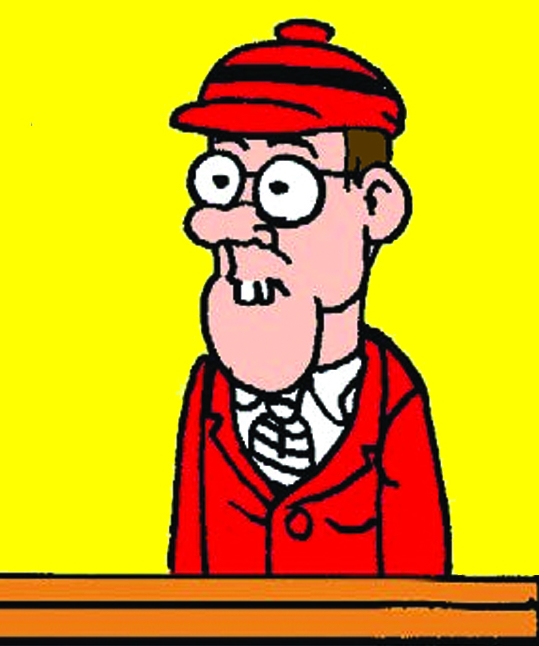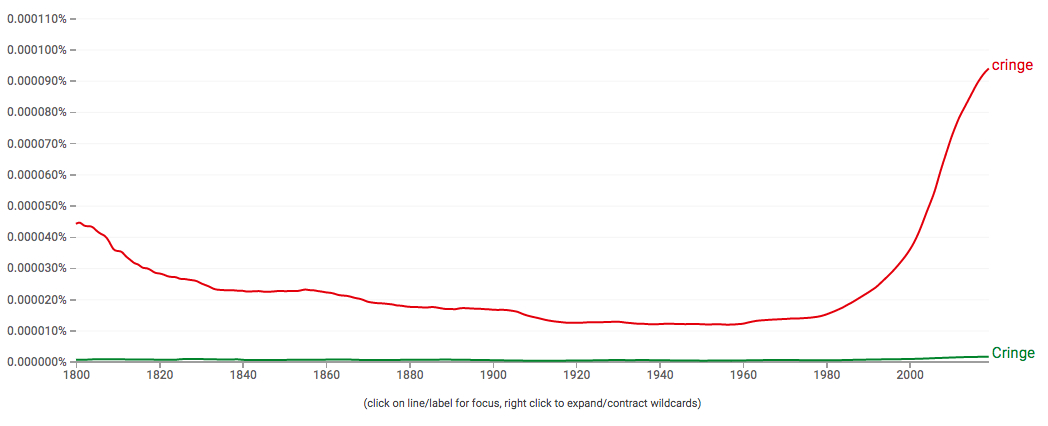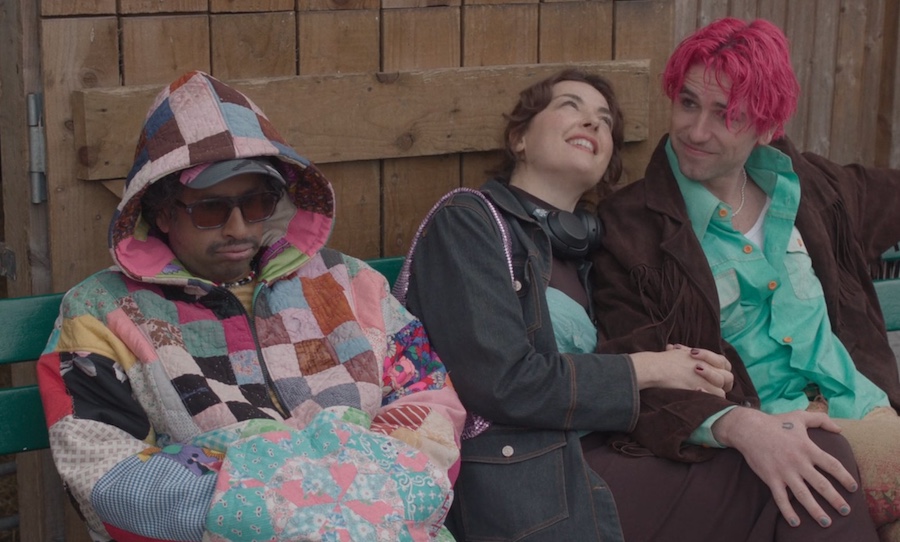The unsettling squirm in your stomach you endure when a handshake meets a fist bump has a name. Let’s explore the history of cringe culture.
W.C Fields once suggested that “comedy is merely tragedy happening to someone else”. It’s more or less true when you take a look at the genre’s branches: Slapstick – A fool trips over themselves. Parody – An actor steps into the shoes of an egomaniac to display their ignorance. Melodrama – The nescience of a hopeless romantic is exacerbated, so they become more tragic. All these sub-categories of comedy present someone’s mistakes as a source of amusement.
However, this list of popular comedic styles feels incomplete. There is one form so emotionally jarring that we believe it’s worthy of standing with the classics. That word/feeling is cringe. Its cultural and online impact is so omnipresent that thorough documentation of its journey throughout Western vernacular feels granted. Brace yourself.

Definitions of cringe
Dictonary.com describes cringing as drawing back “with fear or pain” or to “show submission of fear”. The intense recoil associated with the word originates back to the Old English battle-term ‘cringan’, which meant “give way, fall, become bent”.
The next major update came in 1972, with the British comic strip The Bash Street Kids. The strip introduced the character and teacher’s pet, Cuthbert Cringeworthy, whose pathetic habits were indeed cringeworthy. This primary association of cringe with comedy slowly laid the groundwork for the terms popularity surge.

The unfiltered opinions housed on Urban Dictionary are also worth mentioning. The sites’ top definition, “Jake Paul is cringe”, was posted by ‘ElectroDragon55’, March 2018. It’s brief yet impossible to repudiate.
As you can see below, the term began skyrocketing in popularity in the 2000s. But why? We believe this was when cringe and its place in comedy first had mainstream success.

The Office
The cringe-comedy and mockumentary The Office (UK) first aired in 2001 and quickly became something of a cultural phenomenon. Its mundane office environment, signature British bluntness, and total ignorance of protagonist/boss David Brent (Ricky Gervais) culminated into one of the most cringe-inducing viewing experiences of all time. If you haven’t seen it, the infamous dance scene below should give you a pretty firm understanding of just how far the awkwardness went.
The show rattled a new bone in comedy, and of course, resulted in a wildly successful US spinoff. However, The Office wasn’t alone in its cringe-endeavours. TV Show Curb Your Enthusiasm, made by Seinfeld creator Larry David, also utilised cringe behaviour and awkwardness for comedic effect. At long last, the branch of comedy was taking off.
The next question we need to ask ourselves is ‘Why do we enjoy cringing?”
this is what would happen to me if i stopped being cringe pic.twitter.com/L3oeaazT2w
— z apple strudel☭ (@furbclit) May 11, 2021
The science behind it
Here’s an interesting idea. One argument for why we love cringe content actually stems from our own insecurities. We love cringing at content because it’s secretly comforting. We can laugh at a character making an insensitive remark because laughing ensures that we ourselves would never indulge in such obscene behaviour.
Phillipe Rochat, a developmental psychologist, describes cringe as an instinctive response of empathy or contempt of compassion. If the cringe moment is relatable and understandable, we empathise, but if it was the character/person’s own fault, we mock them. Comedy is a tragedy, after all.
Science YouTuber VSauce also explored the ‘cringe’ feeling in his video The Science Of Awkwardness. Michael Stevens (VSauce) suggests that “our seemingly counter-intuitive attraction to viewing cringey moments” is “a light form of morbid curiosity”. This is because awkward moments are the grey area of social expectations, where anything can happen. Cringe moments aren’t “punishable by law”, but they are subject to “social ostracism”.
Memes
Now that we understand the history of cringe, its popularisation, and why we enjoy it, it’s time to indulge in the internet’s finest offerings. From the Reddit cringe thread, to TikTok, to Youtube compilations, these are the worst of the worst.
Donald Trump
The former President’s presumptuous lying peppered his whole campaign and time in office. By the time he addressed the UN, the audiences’ amusement at his audaciousness was the only reasonable response. Our latest on Trump’s shenanigans here.
Fuckboy Obliviousness
Fuckboy; a term that could use a post of its own, refers to selfish and horny dudes who are under the impression that they’re gods gift to Earth. They often go too far, take this:

YouTube Cringe Compilations
There’s a bottomless pit of ‘try not to cringe’ challenges on YouTube for you to suffer through. This one has 16M views, so we can only assume it’s the cream of the crop.
TikTok Cringe
No discussion about cringe is complete without the platform responsible for a breeding ground of narcissistic, unwatchable cringe. The one below is so god-awful that for your sanity, you have to assume he’s taking the piss.
@mrsimpsexualBaby :) #fyp #ProveWhatsPossible #ActingChallenge #AirheadsDitchChallenge #viral♬ For The Night – Pop Smoke
We hope you’ve enjoyed this chaotic ride through this incredibly affecting style of comedy. Whether intentional or unintentional, cringing is in a league of its own. Next up on meme history, the vibe check.



